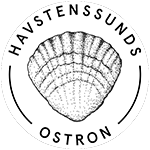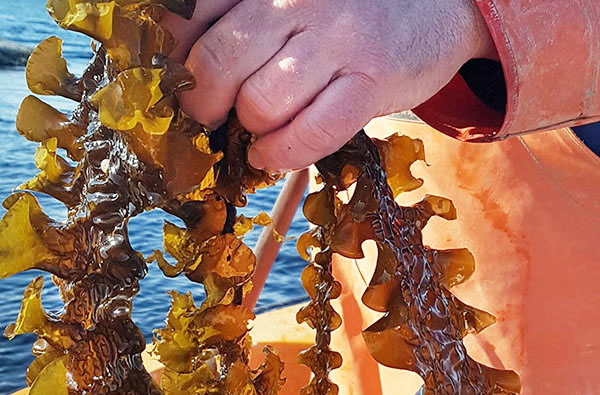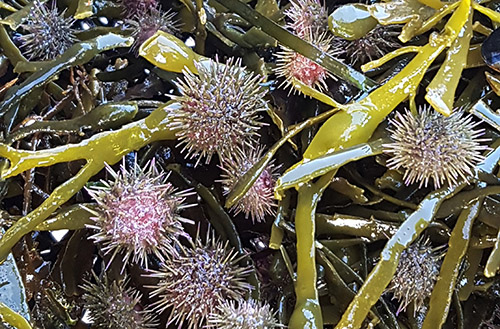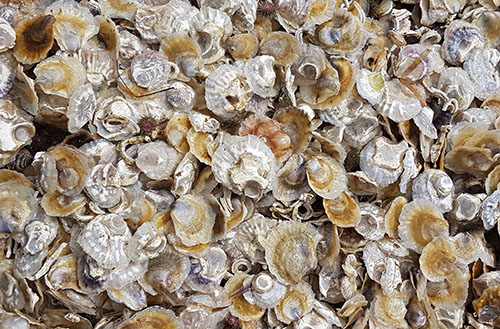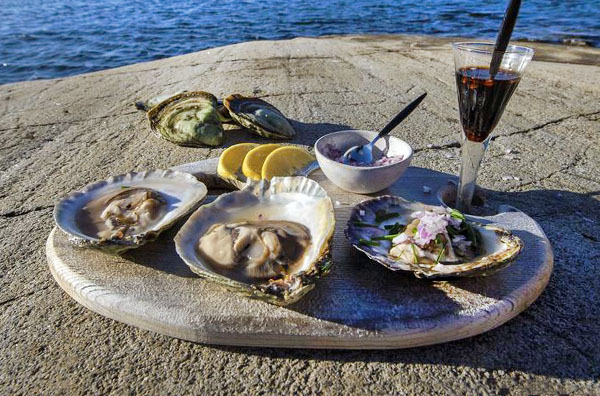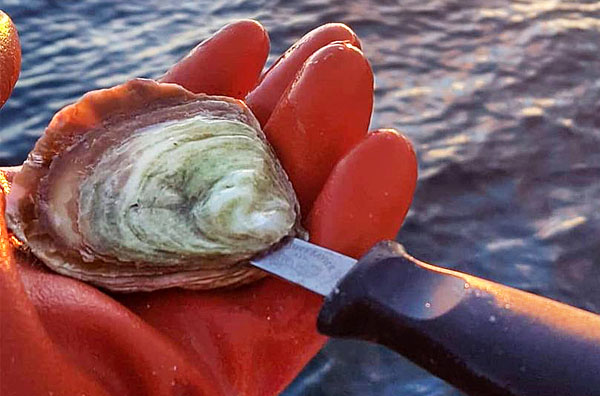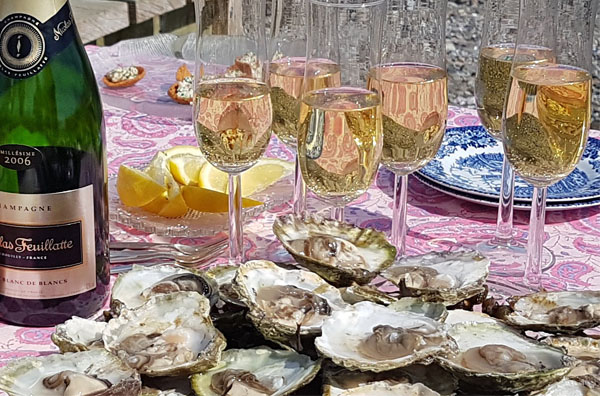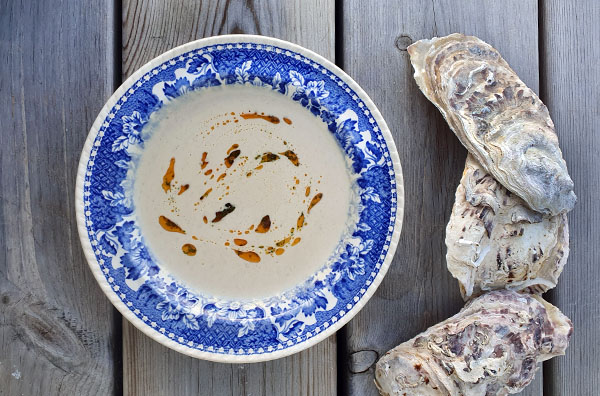ABOUT OYSTERS
In Sweden oysters have been eaten since the Stone Age. In the last decade, oyster consumption has increased significantly and various oyster related events have become popular. Many people associate oysters with luxury and indulgence, but increasingly they are eaten as an ingredient or accompaniment to everyday meals. In many other parts of the world huge quantities of oysters are eaten, and globally some 2 billion oysters are consumed annually.
Oysters are a nutritious and environmentally sustainable food source. They are a source of protein almost without calories but with high levels of important vitamins and minerals (e.g. vitamin B12, zinc, iodine and selenium). The Swedish oyster season runs from September until the end of May, and the oysters taste best in the middle of winter when they develop protection against frost which gives them a sweet taste. The oysters get a very complex taste profile from the clean, salty and algae-rich water in northern Bohuslän, a unique mix of briny sweetness and umami.
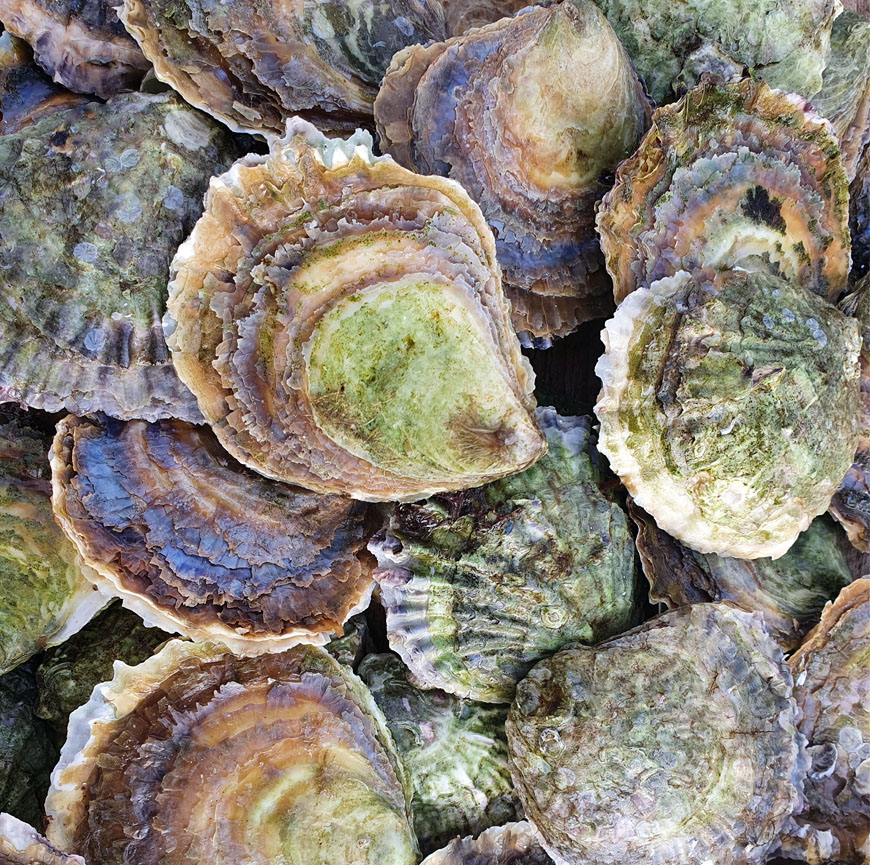
FARMED OSTREA EDULIS
Our primary product is our farmed native oysters, the so-called flat European oysters of the species Ostrea edulis. Fishmongers and restaurants often refer to these oysters as “Swedish oysters”. In Swedish they are known as “flat” or “native” oysters or simply “edulis”. The flat oysters occur naturally along Europe’s Atlantic coast, and have also been introduced in North America. There is a high demand for flat oysters in Sweden and even more so internationally. The largest market is in France, which was also previously the largest producer of farmed flat oysters. However, parasites have wiped out large parts of the oyster stock in France, the rest of Europe and North America. This is a disease that oysters in our northern waters have so far been spared from. Our parasite free farmed Ostrea edulis are thus quite unique, not only in Sweden but also in the rest of the world. Farmed oysters are often larger and contain more meat than wild oysters. The taste is also different, as farmed oysters grow up surrounded by free flowing water, while wild oysters grow up on the bottom. The oysters colour and shape are also affected by the different environments and conditions. Our farmed oysters are regularly scrubbed during their lifespan to remove any harmful growths. This means that our grown oysters have a very even and beautiful shape. We deliver farmed oysters between September and May.
HARVESTED WILD OSTREA EDULIS
Our farmed oysters originate from wild native flat Ostrea edulis oysters. Even today, we harvest wild flat oysters as a complement to our range of oysters on sale. Swedish oysters sold in shops and restaurants are often not farmed, but harvested from wild stock. Wild oysters are often smaller in size than farmed oysters and have a slightly different taste due to having lived in a different environment.
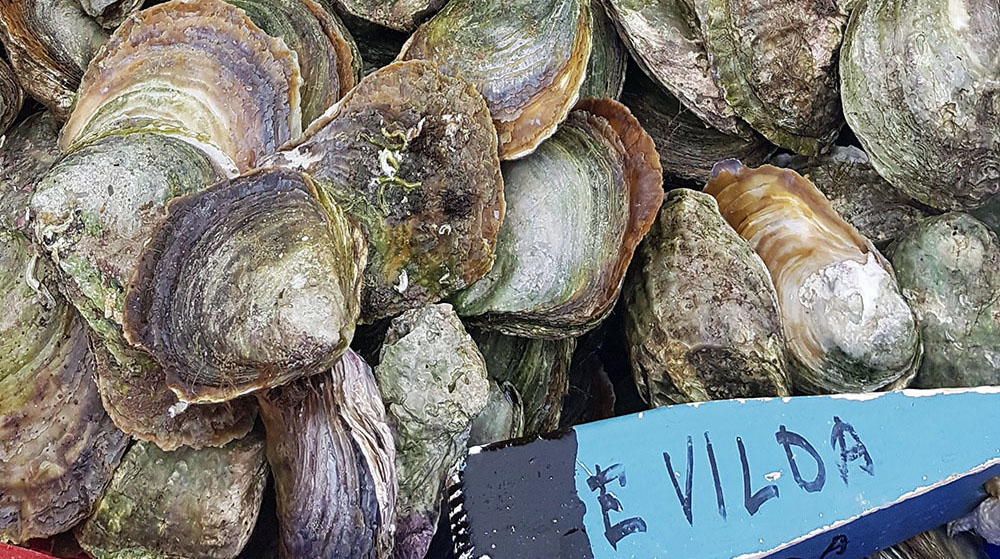
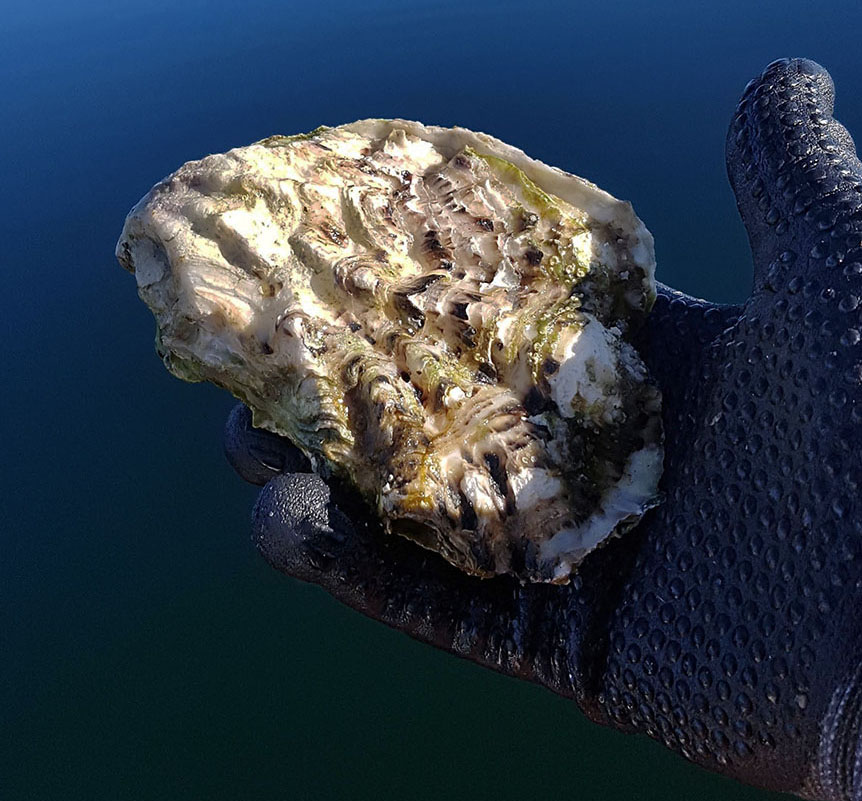
PACIFIC OYSTERS – CRASSOSTREA GIGAS
For a few years now, we have also been harvesting from the wild stock of the invasive Pacific oysters Crassostrea gigas, which were named “Japanese Giant Oysters” when they first arrived in Sweden. This is the most common type of farmed oyster globally. They are also often referred to as “gigas” or cupped oysters.
We have now received permission from the National Food Administration to use “Pacific oysters” (Stillahavsostron in Swedish) as a trade name for these oysters, which is already being done internationally. It is the same oyster species that is imported to Sweden from France under various names, for example “Fine de clair”. Because they grow wild in Sweden and grow faster than our flat oysters, the size and shape vary a lot and they quickly become too large to be eaten raw. However, the larger oysters are very useful for cooking, and can be eaten cooked all year round. We deliver both small Pacific oysters that are eaten raw, and larger oysters that are used in cooking. We have launched a very popular form of fast food, which is BBQ Oysters which have become very popular during the summer.
QUALITY
Havstenssunds Ostron is approved by the National Food Administration to farm, harvest and sell oysters. The quality of fresh oysters must be tested regularly in order to be approved for distribution. The control means that the oysters and the water they live in are examined for bacteria and algae toxins. The waters where oysters are farmed or wild harvested are called catchment areas. Weekly we submit oyster samples to the National Food Administration. If the EU regulated environmental or health indicators are exceeded in a catchment area, it will be closed for harvest until the levels have fallen. The packaging in which approved oysters are sold must be clearly marked and state which catchment area and operation the oysters come from.
All our oysters, both wild and farmed, are washed and scrubbed thoroughly before delivery. The last weeks at the farm they are placed in special baskets in the water’s surface to be cleansed by fresh and free flowing water.

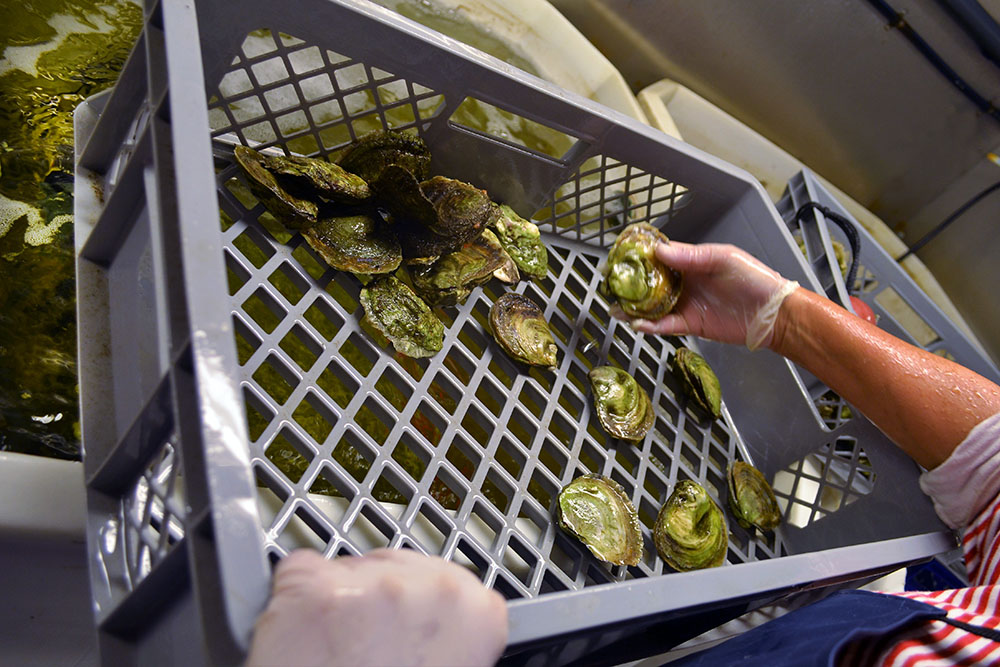
PRODUCTS UNDER DEVELOPMENT
Our passion for aquaculture and sustainable seafood means that we are constantly experimenting with new products. At the moment there is a huge appetite for new ingredients from Swedish restaurants and we are collaborating with several chefs who are testing our ideas and advise us on what type of ingredients are coming up on the international gourmet scene. Here are some products and niche markets that we are working on at the moment:
PRODUCTS UNDER DEVELOPMENT
Our passion for aquaculture and sustainable seafood means that we are constantly experimenting with new products. At the moment there is a huge appetite for new ingredients from Swedish restaurants and we are collaborating with several chefs who are testing our ideas and advise us on what type of ingredients are coming up on the international gourmet scene. Here are some products and niche markets that we are working on at the moment:
